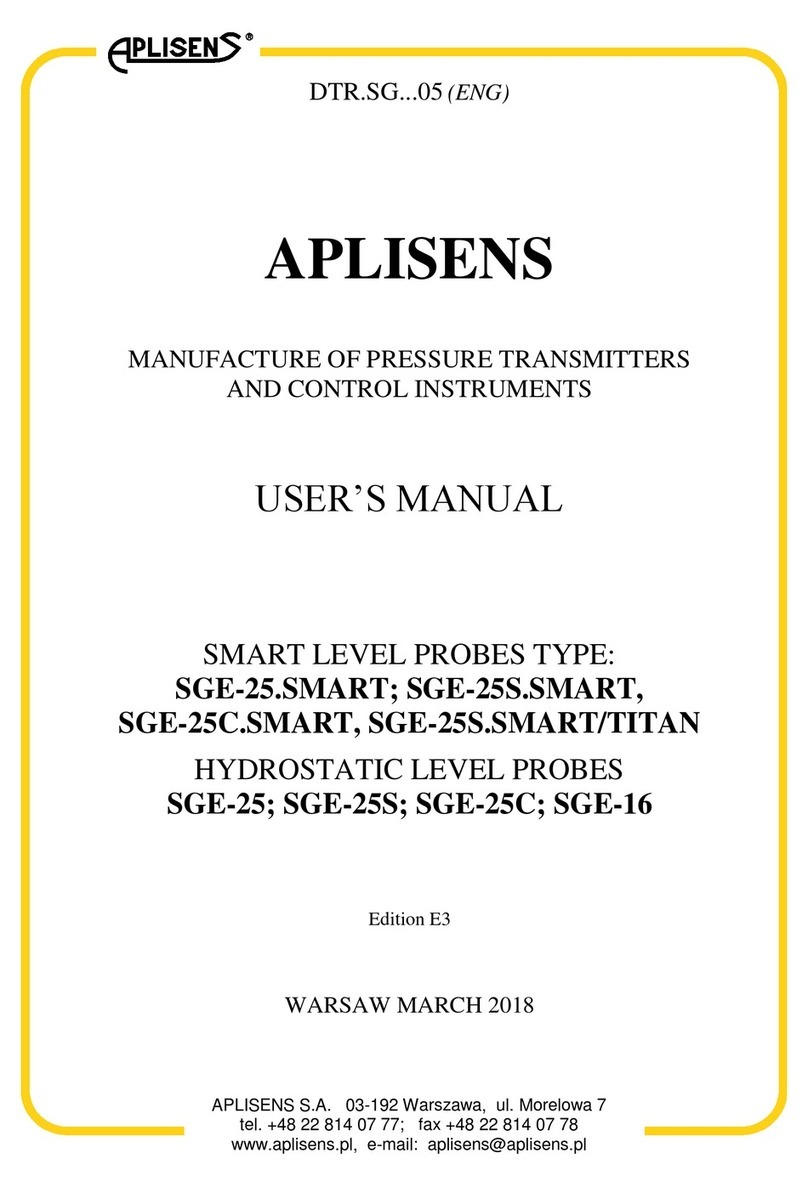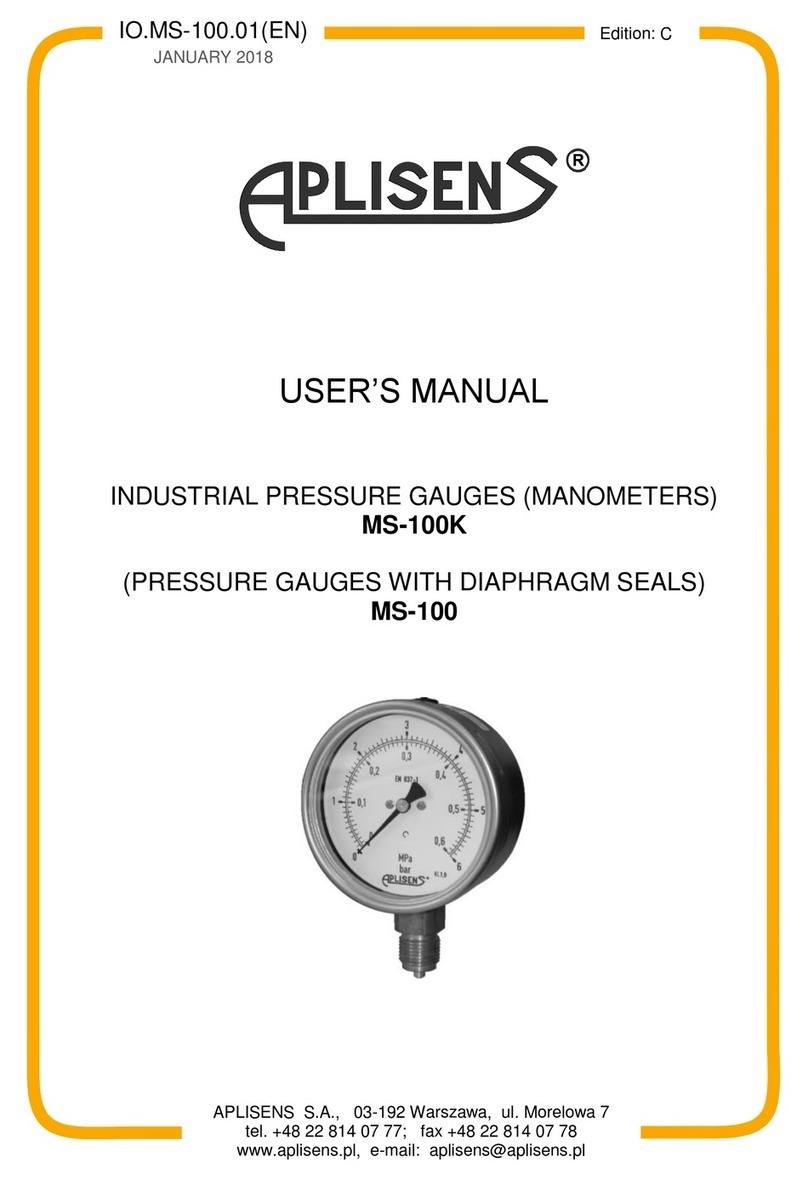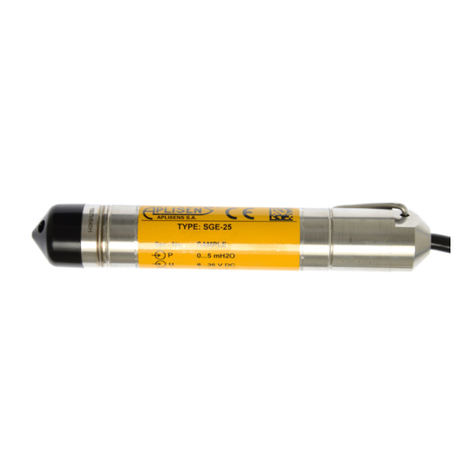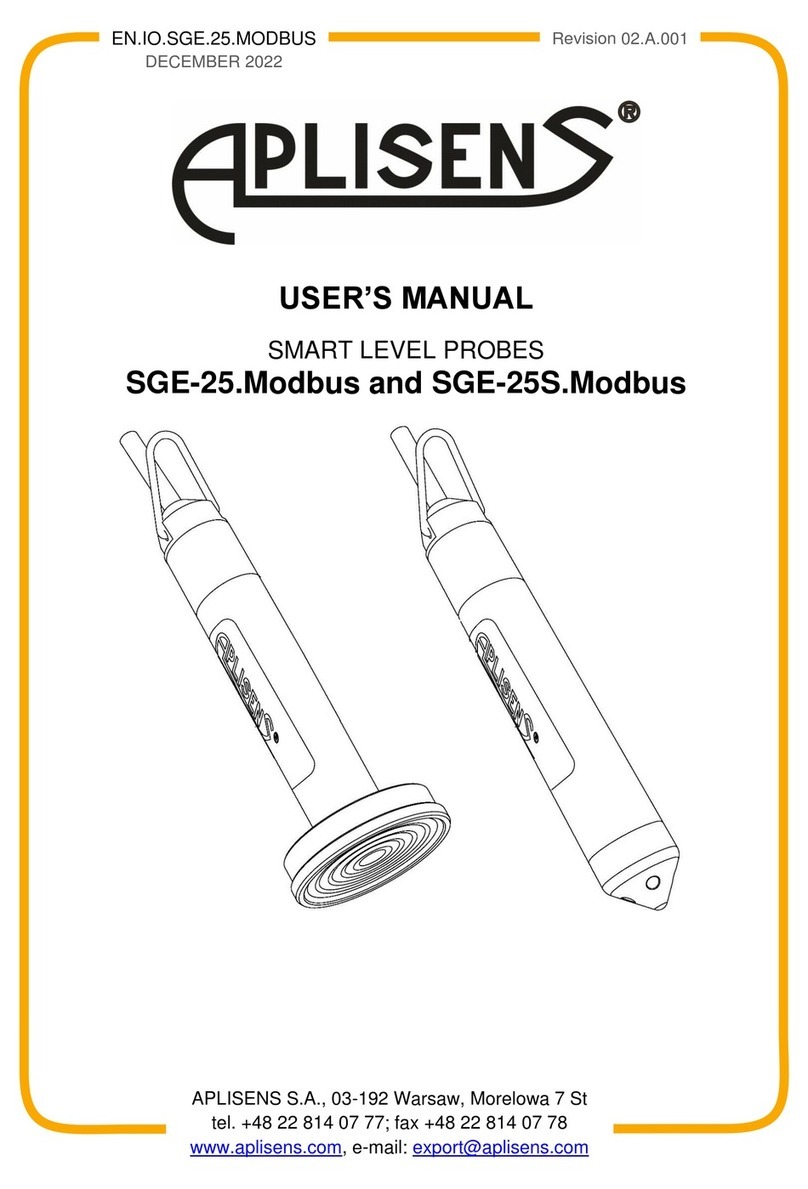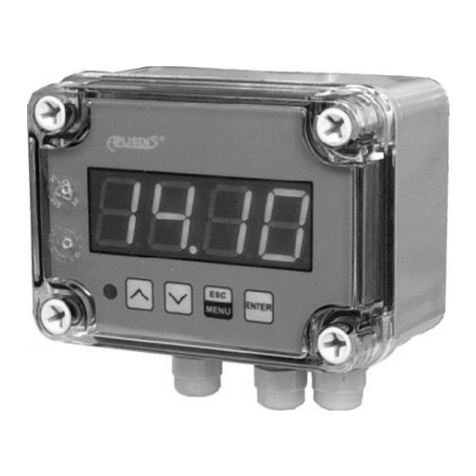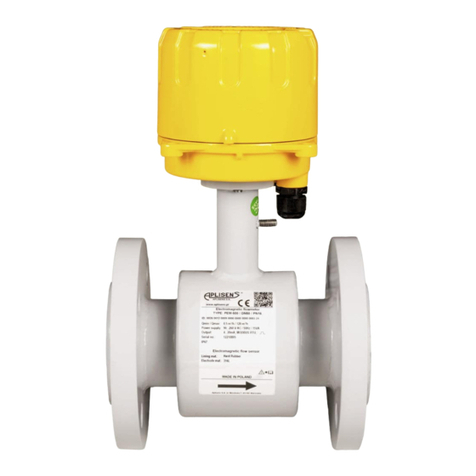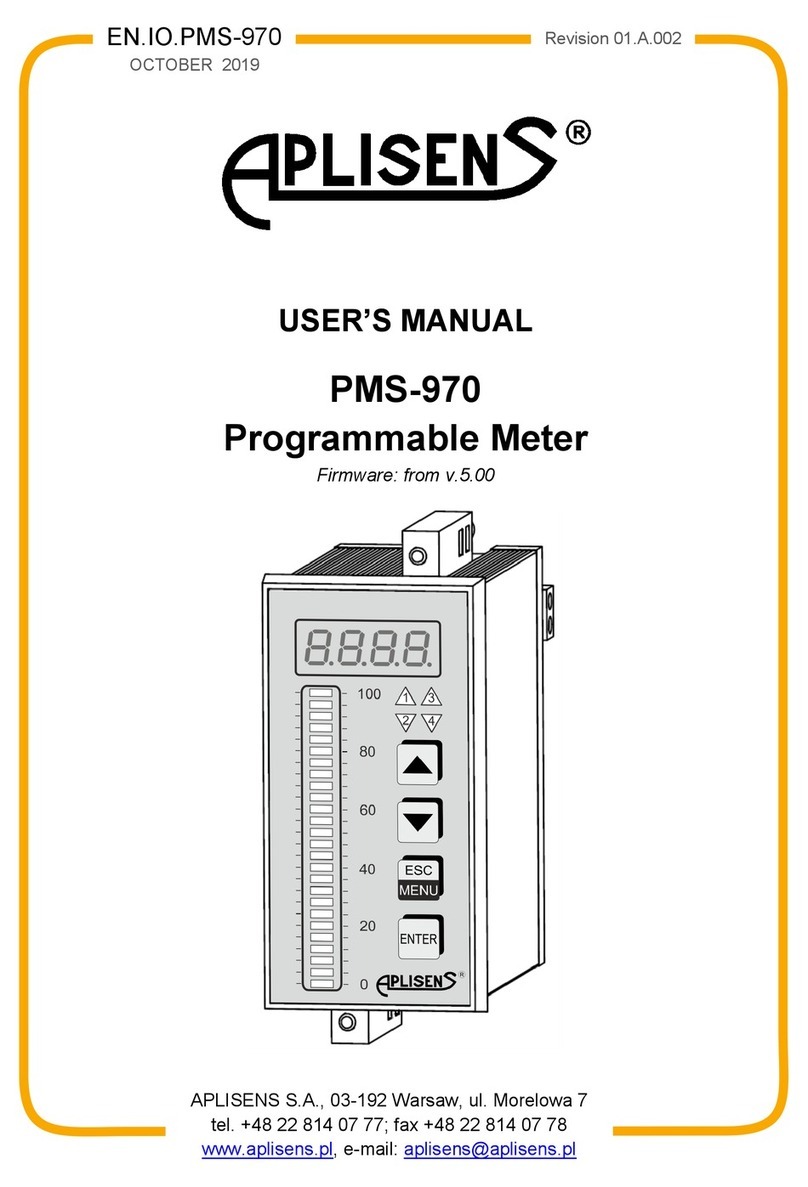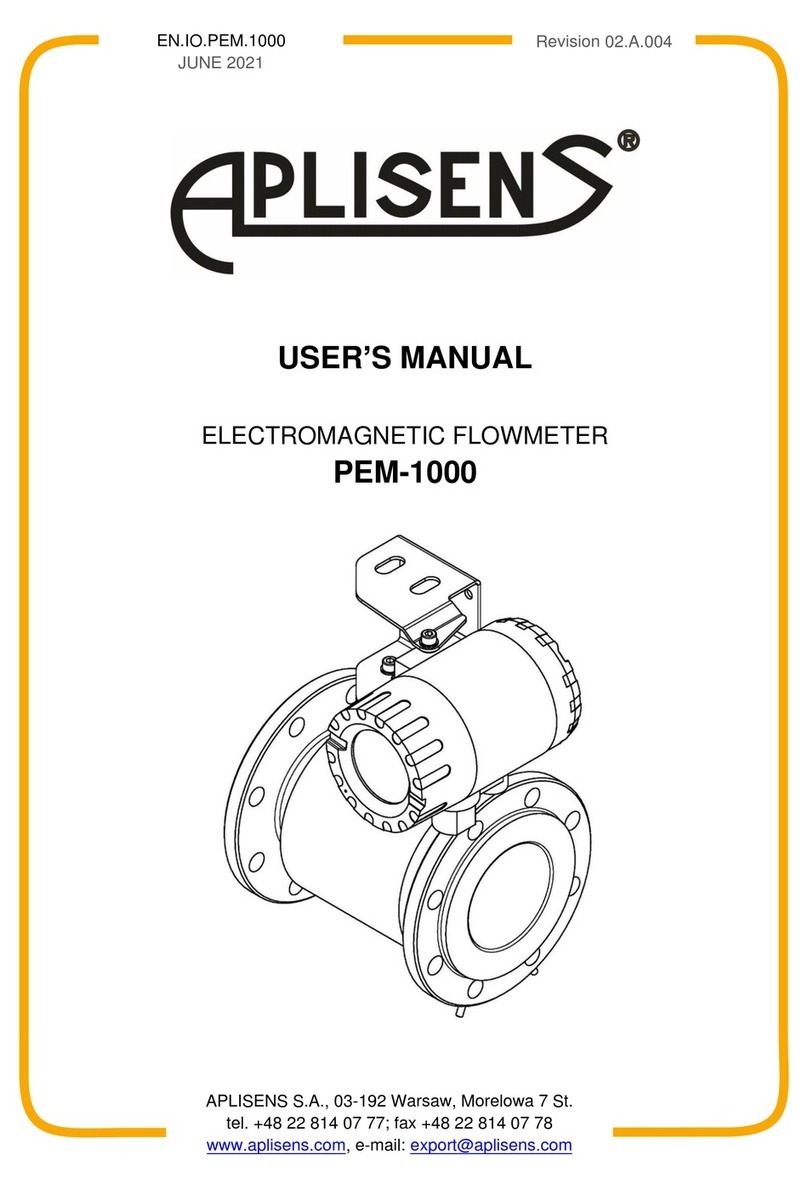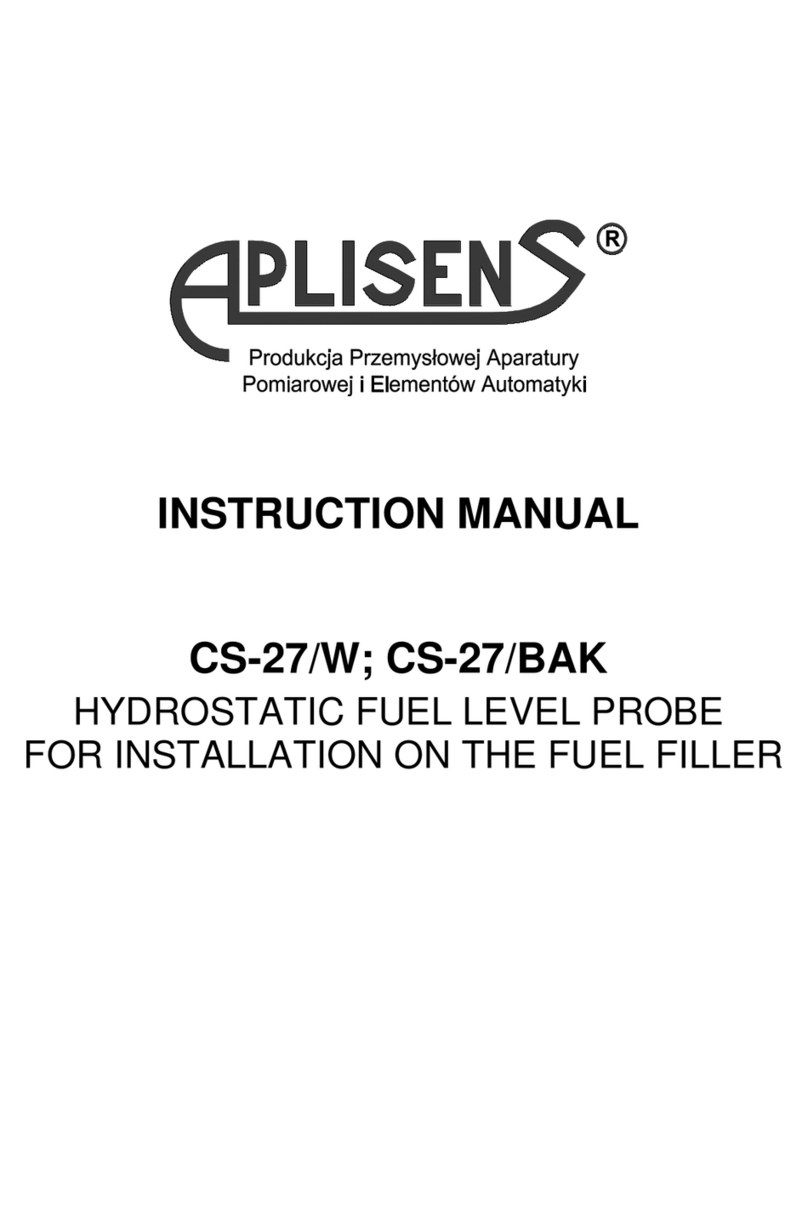User manual for - METER WW-30
CONTENTS
1. BASIC REQUIREMENTS AND USER SAFETY........................................................................................3
2. GENERAL CHARACTERISTICS................................................................................................................4
3. TECHNICAL DATA......................................................................................................................................4
4. DEVICE INSTALLATION............................................................................................................................6
4.1. UNPACKING.......................................................................................................................................6
4.2. ASSEMBLY........................................................................................................................................6
4.3. CONNECTION METHOD...................................................................................................................8
4.4. MAINTENANCE................................................................................................................................12
5. DESCRIPTION OF IR REMOTE CONTROLLER AND CONTROL SOFTWARE PUSH-BUTTONS.....12
6. PRINCIPLE OF OPERATION...................................................................................................................13
6.1. MEASUREMENT MODE..................................................................................................................13
6.2. DETECTION OF THE PEAK VALUES............................................................................................14
. DEVICE PROGRAMMING.........................................................................................................................14
7.1. PROGRAMMING MENU..................................................................................................................15
7.2. PARAMETERS EDITION.................................................................................................................15
7.2.1. N meric parameters (digit change mode)...............................................................................15
7.2.2. N meric parameters (slide change mode)..............................................................................16
7.2.3. Switch parameters (“LIST” type).............................................................................................16
7.3. MENU DESCRIPTION.....................................................................................................................17
7.3.1. “inPt” men ..............................................................................................................................17
7.3.2. ”bri” parameter.........................................................................................................................22
7.3.3. ”HOLd” men ...........................................................................................................................23
7.3.4. ”Scod” parameter....................................................................................................................23
7.3.5. ”rS” men .................................................................................................................................23
7.3.6. ”Edit” parameter......................................................................................................................24
7.3.7. ”dEFS” parameter....................................................................................................................24
7.3.8. ”SErv” men ............................................................................................................................24
7.4. MENU STRUCTURE........................................................................................................................25
8. OVER-CURRENT PROTECTION.............................................................................................................26
9. DISPLAYED VALUES CALCULATION....................................................................................................26
9.1. ADDITIONAL CALCULATIONS (USED CONVERSION CHARACTERISTIC)...............................26
9.1.1. Linear characteristic................................................................................................................27
9.1.2. Sq are characteristic..............................................................................................................27
9.1.3. Sq are root characteristic.......................................................................................................28
9.1.4. User defined characteristic.....................................................................................................28
9.1.5. Vol me characteristics of a cylindrical tank............................................................................29
9.2. EXAMPLES OF CALCULATIONS...................................................................................................30
10. THE MODBUS PROTOCOL HANDLING...............................................................................................34
10.1. LIST OF REGISTERS....................................................................................................................35
10.2. TRANSMISSION ERRORS DESCRIPTION..................................................................................37
10.3. EXAMPLES OF QUERY/ANSWER FRAMES...............................................................................37
11. DEFAULT AND USER'S SETTINGS LIST.............................................................................................40
2
